If you see a very active medium-sized butterfly, warm brown in color with darker brown lines across its wings, and eyespots near the outer wing edges, it may be a Little Wood-Satyr. This butterfly’s range includes most of the eastern two-thirds of the United Sates, and southernmost Quebec, Ontario, and Manitoba provinces in Canada.
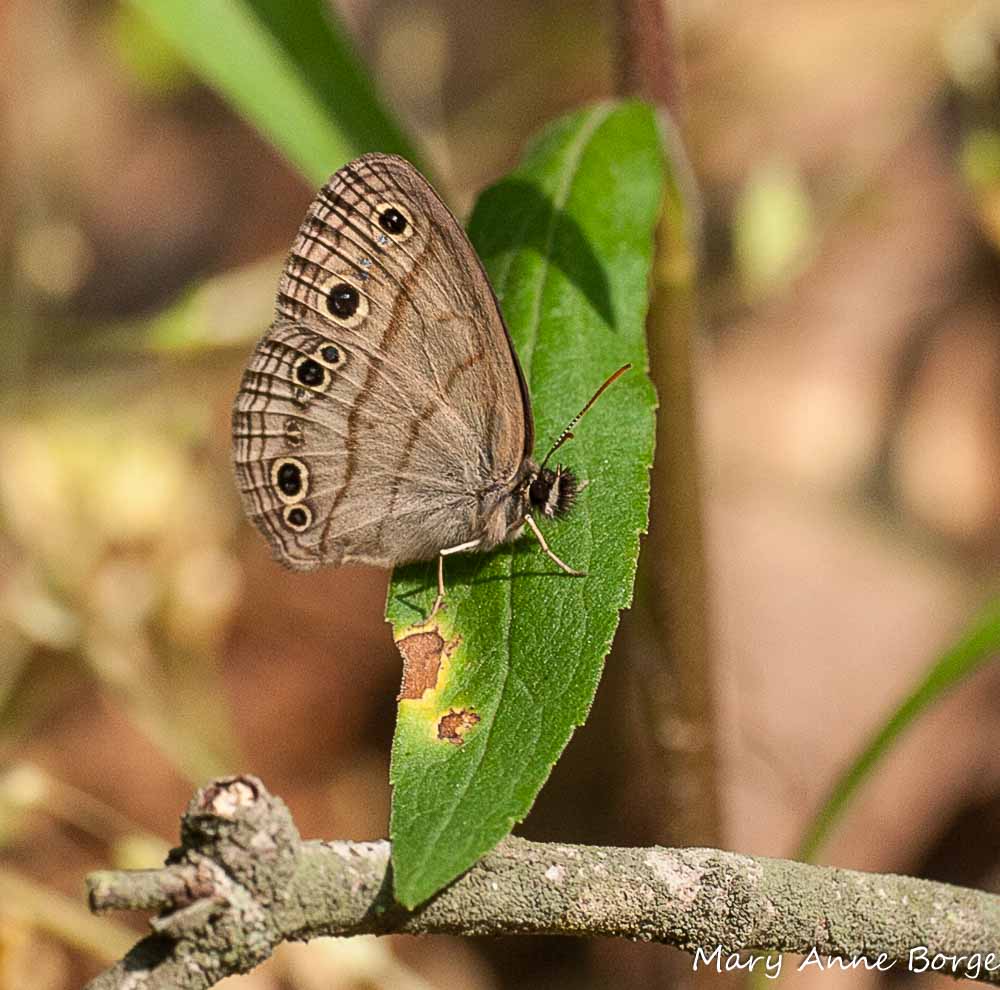
Little Wood-Satyrs are usually seen in openings or clearings in deciduous woods especially where grasses are present, and in edge habitat, where a woodland meets a more open area like a meadow or field.
Adults typically feed on aphid honeydew (excrement), sap, decaying matter, and rarely, flower nectar.
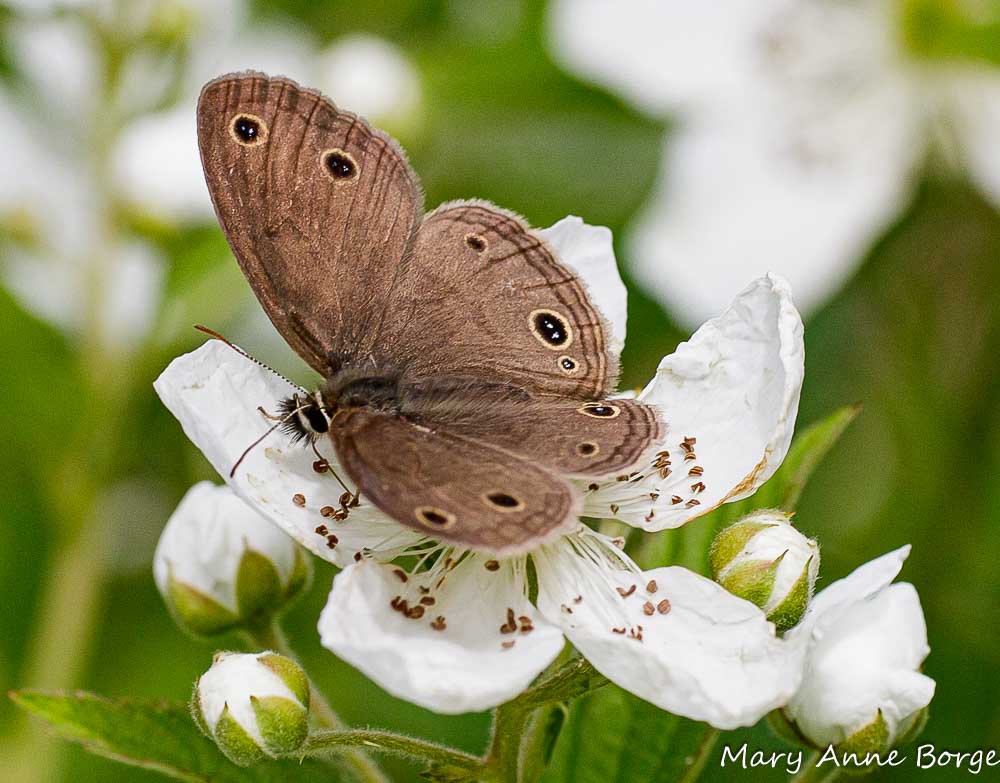
Many butterflies specialize on a few closely related plants as their caterpillar food, often because of the chemical protection their chosen food provides them throughout their lives, from caterpillar to pupa to butterfly. Monarch butterflies are probably the most famous example of this specialization. Although Monarchs drink nectar from many different flower species, their caterpillars can only survive by eating milkweed (Asclepias species) leaves, buds, and flowers. Another example is the Pipevine Swallowtail, who specializes on pipevines (Aristolochia species) such as Dutchman’s Pipevine (Aristolochia macrophylla) as their caterpillar food. This specialization is a common strategy of many butterflies and moths.
Other butterflies, including Little Wood-Satyr, take a different approach. Little Wood-Satyr caterpillar food consists of various grasses, including Orchard Grass (Dactylis glomerata), Kentucky Bluegrass (Poa Pratensis), Blackseed Speargrass (Piptochaetium avenaceum), St. Augustine Grass (Stenotaphrum secundatum), and probably many others. Using grasses as its caterpillar food gives this butterfly a vast array of food choices, but on the down side, this diet doesn’t offer any chemical protection to the caterpillar and subsequent pupa and butterfly.
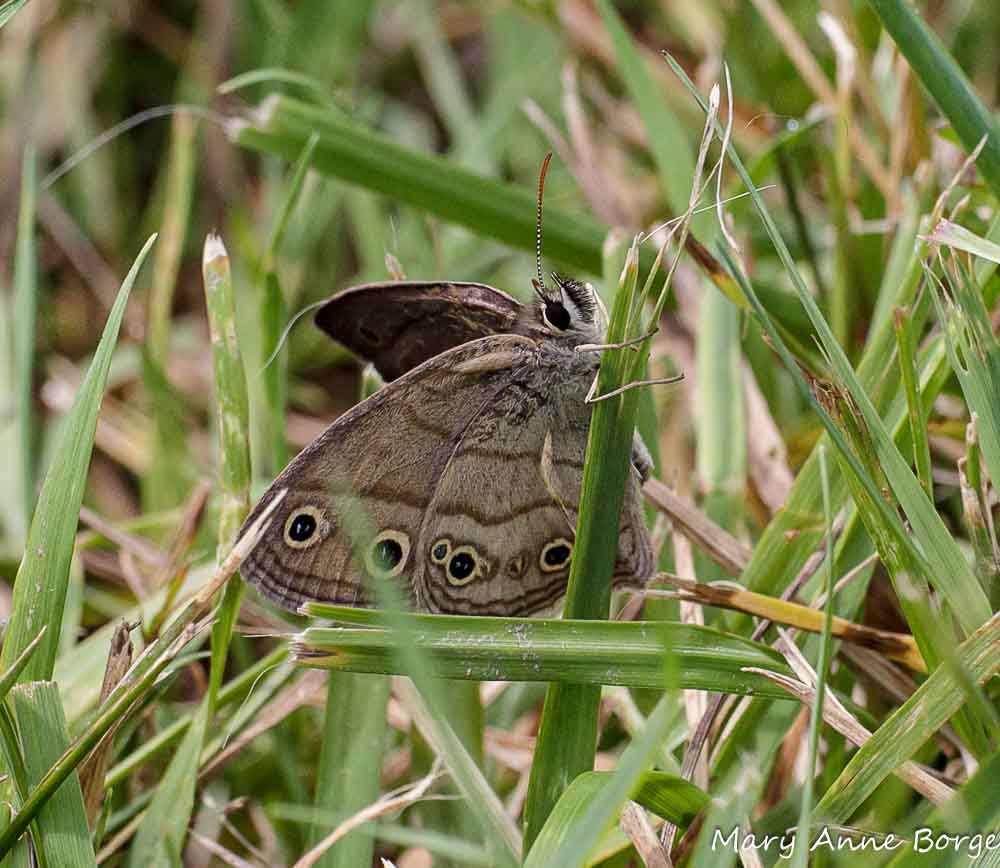
Probably because of this, Little Wood-Satyr has evolved other strategies to discourage or elude predators. This energetic butterfly has an irregular flight that may look erratic, but is probably a deliberate attempt to evade predators. In addition, studies show that eyespots near the outer margin of the wings, such as those on display in Little Wood-Satyrs, can deflect the attention of predators away from the vulnerable body of the insect, and toward the wing edges. A butterfly can survive with some damage to its outer wing, but it needs an intact body. This strategy may be most effective in the low light of dawn and dusk when their most likely predators, birds, are active, and the butterflies are not.
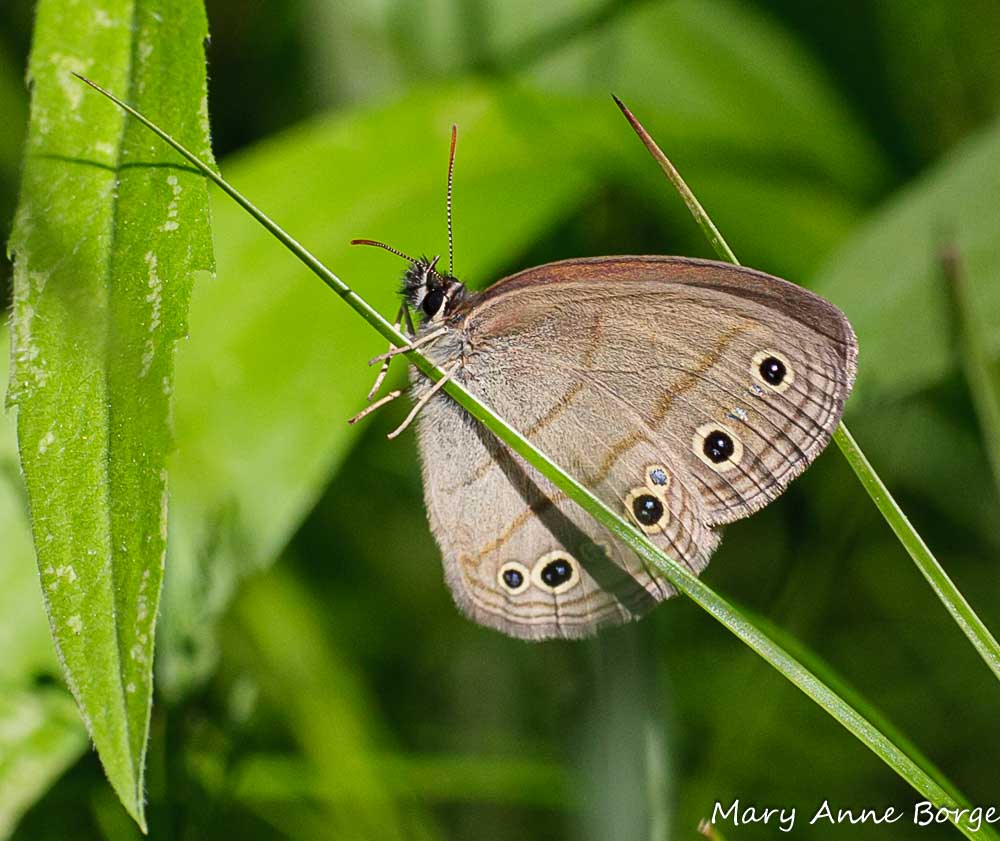
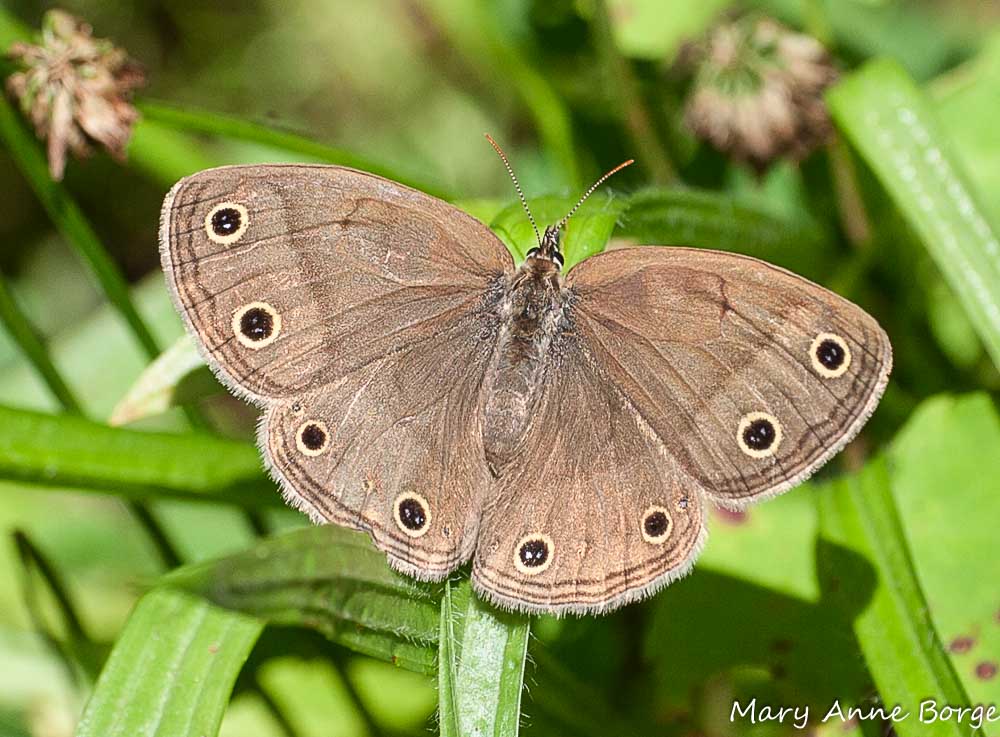
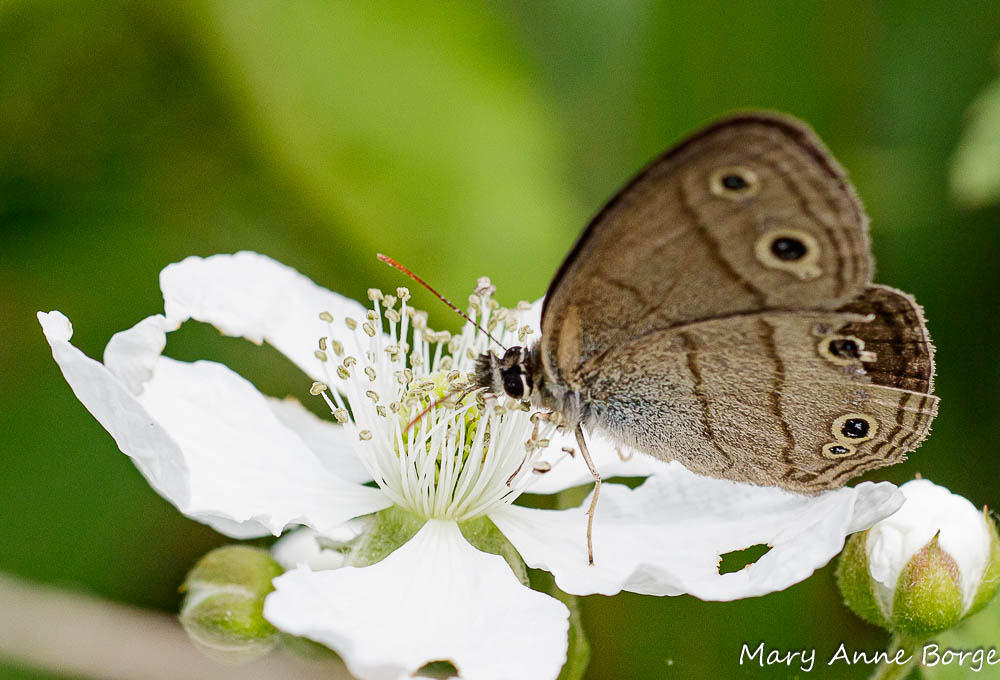
Little Wood-Satyrs are leaving me with questions.
Why is the group of butterflies to which the Little Wood-Satyr belongs called Satyrinae or Satyrs? A somewhat inoffensive description of the creatures of Greek mythology called satyrs is that they were lustful, drunken woodland gods who partied with Dionysus, also known as Bacchus, the Greek god of wine. (Descriptions of their appearance and behavior escalate from there.) I have yet to read anything that definitively explains why this group of butterflies would be named for them. The Satyrinae butterflies do frequent woodlands, and maybe their flight patterns give the appearance of drunkenness. Could that be the reason for this unlikely name?
Little Wood-Satyrs are present in my back yard this year, which includes a small wooded area with Bottlebrush Grass (Elymus hystrix). Do they use this plant as caterpillar food? I’m going to watch and see.
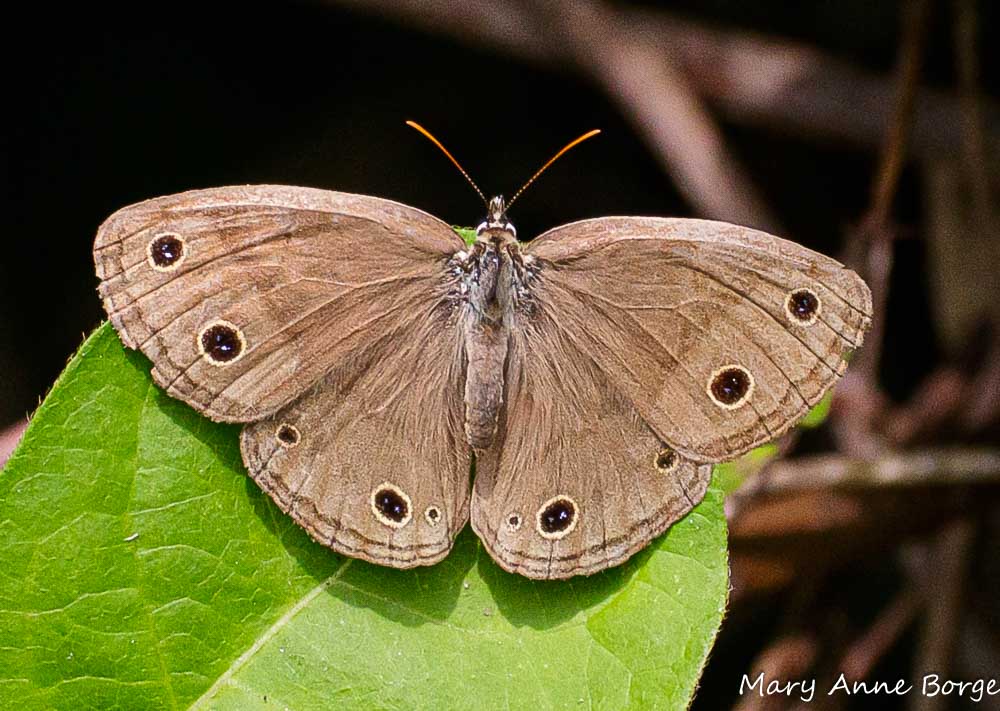
Resources
Butterflies and Moths of North America
Cech, Rick; Tudor, Guy. Butterflies of the East Coast. 2005.
Glassberg, Jeffrey. A Swift Guide to Butterflies of North America. 2012.

I just spotted a satyr comma in western bc and I am wondering where the name is from, and found your page. I really do wonder why and how these little guys were named Satyrs
Me, too! If I find anything more definitive, I’ll update the post.
Thank you for opening my eyes to the little wood-satyr. I’ve found it on the chart that I keep handy and will watch for it outside. Everything about your presentation is a delight.
Thank you, Nancy!
Very interesting! Thank you!
I’m glad you enjoyed the post.
Informative with beautiful pictures as usual. Thank You
Barbara
Thank you, Barbara!
Wouldn’t you know, I just made the acquaintance of this butterfly this morning. So lovely! Your photos are terrific, and I’m happy to learn a bit more about this garden denizen. Thanks for the post 🙂
the Little Wood Satyrs are really out and about. I had three friends ask separately if I knew what the butterfly was, so I thought it deserved a post.
Thank you for yet another beautiful and informative blog post.
I’m glad you enjoyed it!
Great piece on Little Wood Satyrs (I too wonder about the name …)! Last year we did the no-mow May thing for what remains of our lawns which extended into June as we were away. When we returned, the yard (basically an acre or less of open green space surrounded by deep forest) was alive with Little Wood Satyrs – we always had a few in the past but had never seen so many altogether and they were all either seeking mates or ovipositing. Ergo the no-mow had to continue for a while longer – that’s my excuse for why parts of the yard look so messy, and I think it’s a good one! And they’re back again this year. I have been trying to get rid of the old turf and invasive grasses like Kentucky Blue and Orchard, but they are definitely using those so patches so they will have to stay until I figure out what else they might use that’s native – I’m pretty sure I have some Poa pratensis (bog blue grass). I haven’t seen them on the Bottlebrush grass, they mostly seem to be flitting about actively in the sunny places and the Bottlebrush is in a shady spot, but I will watch more closely. I need an excuse to plant some more because I really love it!
Thanks for another great post!
I’ve seen so many this year, tons at The Watershed! Let me know what other grasses you see them using. And i think we’ve been sold on the idea that natural landscaping is ‘messy’. We need a societal mind-shift!
I agree that we need a mind shift – I am lucky because nobody can see our “yard” from the road because of all the trees surrounding it, but for those who do venture down our long driveway, they will find signs at the bottom explaining what’s going on and not start thinking that they need to call social services to help these poor old folks get out from under the encroaching vegetation! I’ll keep an eye on the flitty little satyrs and see if I can determine what grasses they’re using, and report back!
Sounds good. Thanks, Juanita!